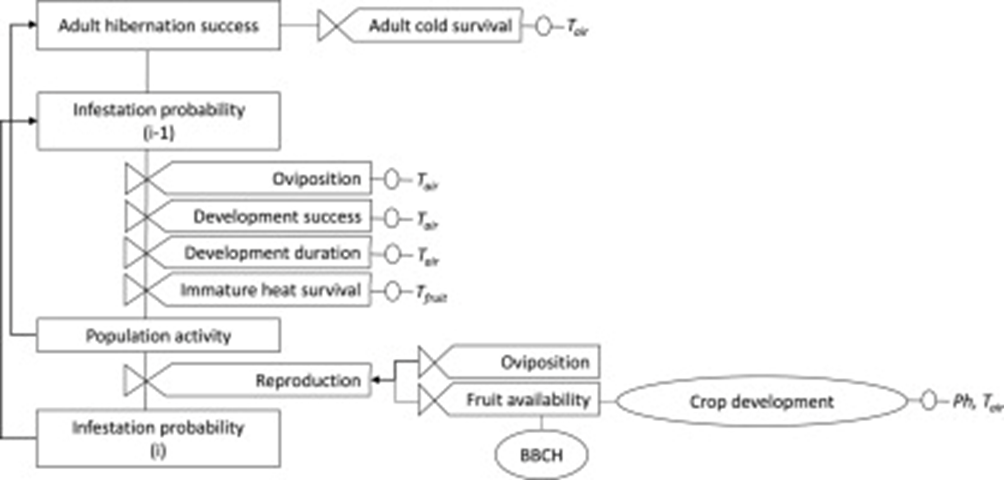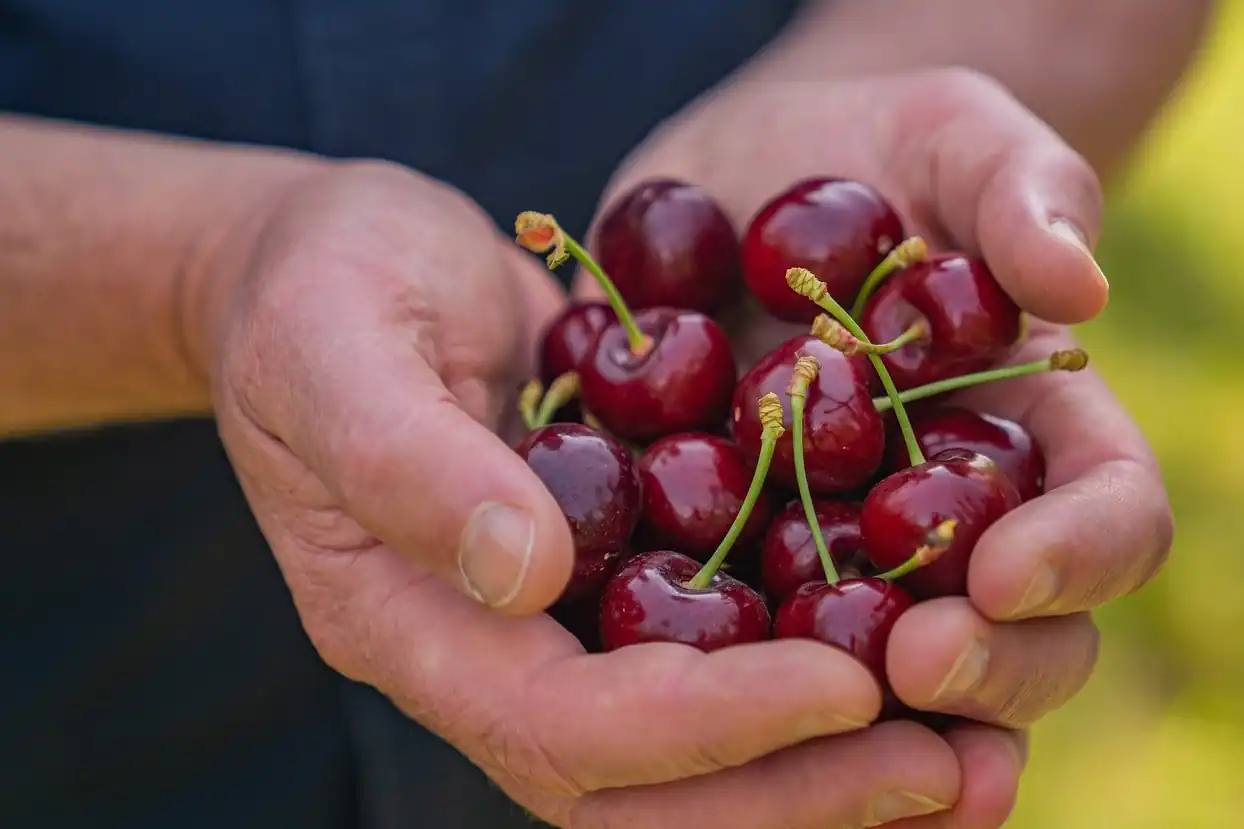Drosophila suzukii is a pest that affects fleshy fruits such as cherries, raspberries, blackberries, and grapes. This insect is native to Asia and invaded Germany in 2011, causing significant economic damage to orchards and vineyards. Characterized by a rapid life cycle and a high reproductive capacity, Drosophila suzukii is particularly difficult to control.
Therefore, German researchers developed a decision support system (DSS) called SIMKEF, with the aim of predicting and controlling this insect using models based on temperature data.
SIMKEF stands out for its approach, which combines various climatic and biological parameters to estimate the (daily) likelihood of the pest’s presence during the fruit ripening phase. The model takes into account key life cycle processes of Drosophila suzukii, such as adult overwintering, reproductive rates, and the survival of immature stages (eggs and larvae) under extreme temperature conditions.
 Source: Winkler et al., 2024
Source: Winkler et al., 2024
Air temperature plays a crucial role in the pest’s reproduction: a range between 18°C and 30°C favors oviposition, while temperatures above 30°C reduce the population and, consequently, the risk of oviposition. Additionally, during winter, sub-zero temperatures can drastically reduce the initial population, lowering the probability of early infestation.
Simulations conducted with SIMKEF have shown variable accuracy depending on the crop. In the case of blackberries, the model correctly predicted 75% of infestations, while for cherries and the grape variety "Dornfelder," the accuracy was 54%. The results were less precise for raspberries and the grape variety "Portugieser," with an accuracy of 25% and 27%, respectively.
This indicates that the model has room for improvement, especially for fruit varieties that require a longer ripening period. Nevertheless, the system can already serve as a useful tool for farmers, helping them determine more accurately when to intervene.
The model’s validation revealed a tendency to predict infestations too early for some crops and too late for others, suggesting the need for further adjustments. One of the main challenges in improving the model’s precision lies in its complexity. SIMKEF incorporates numerous life cycle parameters of Drosophila suzukii, some of which may be simplified without compromising the quality of predictions.
Additionally, sampling in more locations could contribute to greater accuracy in future simulations. Further improvements to the model could include the use of other climatic factors, such as relative humidity and precipitation, which influence the insect’s activity.
Despite its current limitations, the SIMKEF model represents a step forward in integrated pest management (IPM), providing farmers with decision support for controlling Drosophila suzukii. As highlighted by the study's authors, SIMKEF should be used in combination with other monitoring tools (e.g., traps) to refine and improve intervention timing. Ultimately, the SIMKEF model offers a solid foundation for the development of even more accurate and efficient decision support systems for Drosophila suzukii control.
Source: Winkler, A., Bauer, S., Jung, J., Kleinhenz, B., & Racca, P. (2024). SIMKEF–A decision support system to predict the infestation probability of Drosophila suzukii. Crop Protection, 185, 106858. https://doi.org/10.1016/j.cropro.2024.106858
Andrea Giovannini
University of Bologna (IT)
Cherry Times - All rights reserved











